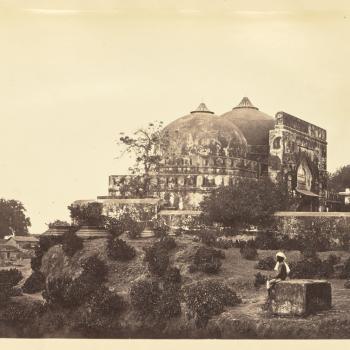Economic Indicators compared in first four years of NDA, UPA-I and UPA-II
|
|
UPA I
|
UPA II
|
NDA
|
| Overall GDP Growth %
|
8.9%
|
7.2%
|
7.3%
|
| Agriculture GDP Growth %
|
3.8
|
4
|
2.4
|
| Industry GDP Growth %
|
10.3
|
6.4
|
7.1
|
| Services GDP Growth %
|
9.9
|
8.3
|
8.8
|
| Inflation
|
5.8
|
10.4
|
4.7
|
| Bad loans
|
52,000 crore
|
123,000 crore
|
662,000 crore
|
| FDI Inflow
|
$18.2 billion
|
$38.4 billion
|
$52.2 billion
|
| Ease of Doing Business
|
123 (2009)
|
142 (2014)
|
77 (2018)
|
| Gross Tax Revenue
|
4.35 lakh crore
|
8.36 lakh crore
|
15.9 lakh crore
|
| Income Tax Returns Filed
|
3.4crore (2009)
|
3.8 crore (2014)
|
6.9 crore (2018)
|
| % of adult Indians with bank a/c
|
53% (2014)
|
80% (2018)
|
|
| Kms of Highway built per year
|
4885
|
7750
|
|
| Agricultural Insurance
|
3 crore hectares (2013)
|
5.8 crore hectares (2017)
|
|
| Toilets built
|
95 lakh (2012-14
|
4.5crore(2014-17
|
|
| Houses built each year
|
17 lakh
|
24 lakh
|
28 lakh
|
| Soil Health Cards given
|
2.8 crore (2011-14)
|
9.2 crore (2015-17)
|
|
| Total Optical Fiber laid
|
5378 km (2009-2014)
|
223,200 kms (2014-2018)
|
|
| Primary Fiscal Deficit (Excluding Interest Payments on National Debt)
|
1.1% of GDP (2014)
|
0.2% (2018)
|
|
| LPG Connections
|
8.9 crore (2004-14)
|
10 crore (2014-18)
|
Points to Note
GDP Growth: UPA I had a high GDP growth, which was an inheritance from the previous NDA regime. In 2004, when UPA I came to power, they inherited a GDP growth rate of 8.2% that was trending upwards. The Vajpayee government had introduced structural reforms such as launching of the Golden Quadrilateral, policies for triggering telecom revolution, rationalisation of fertiliser and petroleum subsidies, strategic disinvestment of public sector undertakings and the launch of a new exploration and licensing policy which acted as the springboard for a big boost to production of oil and gas. In 2014, NDA inherited a downward trending GDP growth rate of 6.9%. Similarly UPA I inherited an upward trending industrial growth rate of 5.4%,compared to 2014, where NDA inherited a downward trending 4.2%.
Inflation: The inflation during 2014-18 was low, compared to the UPA government. This is generally attributed to low oil prices. This is not entirely true. Even in FY 2017-18, when global crude prices were rising, inflation was 3.6%, much lower than previous years of the NDA regime itself, and far lower than the 10% of UPA-II. Inflation has dropped with each year of the NDA regime. Another point to note is that even in the previous NDA regime of 1999-2004, inflation was low at 4.1% on average.
The reasons for this are that food prices have been kept in check through better management like buffer stocks and a crackdown on hoarding. In UPA years, sudden shortages led to sharp spikes in prices, especially of vegetables and pulses. MSP has also been kept in check under NDA. Rather than raise MSP too much, which benefits only 20-25% of farmers, the government has chosen other mechanisms. Direct cash assistance is being given, to compensate farmers for the difference between market prices and MSP. Additionally, each farming family with upto 2 hectares is given Rs 6000 a year. It is expected to benefit 12 crore small and marginal farmers. Private procurement of certain items is also being encouraged, with the govt. making up for any losses to the private company if market prices fall below MSP.
Also, though global crude prices were low initially, the Modi government kept local fuel prices more or less unchanged. The government thus collected a huge amount of revenue, which it has been using for infrastructure projects such as housing, roads etc.
Bad Loans: The RBI has forced banks (especially public sector banks) to clean up their balance sheets. Bad loans have consequently risen drastically. This is considered the world’s worst bad loans situation. In FY 18, the banks had INR 961,000 crores of bad loans.
The bad loans surged dramatically in mid-2015 when the RBI brought in stricter norms for recognising and reporting NPAs. These were loans sanctioned mostly between 2006-2011. Banks had indulged in evergreening, which means sanctioning more loans to companies so that they can repay previous ones.
The government passed the Insolvency and Bankruptcy Code in 2016 to help banks recover bad loans. One important part of this is that earlier, company owners would file for bankruptcy and thereby default on debts, and when their company came up for auction again, would rebid for it at a much lower rate and regain control, this time free from debt. The Bankruptcy Code has stopped this. The Code has been praised from all quarters, but one complaint is that resolution is not happening according to the RBI timeline, and therefore resolution of bad loans is getting delayed.
So far, 3 lakh crores of bad debts have been settled or written off and companies auctioned. This year, another 0.8 lakh crore is expected to be recovered by March 2019. More “hidden” NPAs are unlikely to come to light from now on, because the process of identifying them is largely done.
India’s economy is suffering due to these bad loans. Growth during the UPA regime was fuelled by large loans that companies took. Many of these loans have turned bad, which banks have been covering up all these years. This bad loan epidemic has lowered the domestic potential of investment.
This loan-fuelled growth and huge subsidies doled out by the UPA government was also responsible for an economic bubble that was developing. Primary fiscal deficit was poor and had peaked to 3% in 2010 (it is 0.2% in 2018), while inflation ballooned and India came to be considered a fragile economy in 2013.
The economy is much more stable now, with a market more resilient to external shocks, inflation in check due to systemic safeguards, primary fiscal deficit almost zero and banks gradually recovering their investment capabilities.
FDI Inflow: India’s FDI inflows have increased 70% since 2014. India has had the highest greenfield FDI inflows in the world since 2015, overtaking China & the US. Greenfield investments are investments where a company invests to build up from scratch, compared to investments where the company already has investments or takes over existing infrastructure of some other company.
An important point here is that these FDI numbers are deceptive. Mauritius, Singapore & Netherlands are the three highest sources of FDI in India, accounting for 65%. This is primarily due to round-tripping. Local companies create shell companies in Mauritius and send money there. This money is then routed back to India as FDI. Since India has a Double Taxation Avoidance agreement with Mauritius, where capital gains due to investments from Mauritius are liable to pay tax only to Mauritius, India does not make money on these FDI inflows. Additionally, Mauritius actually has zero tax on Capital Gains, so companies end up not paying any tax at all. Similar agreements are in place with other countries. The government is plugging these gaps in a phased manner, but most of the FDI into India is suspected to be of this kind.
This is one reason why high FDI inflows have not boosted manufacturing or employment substantially. The remainder of FDI inflow is also more of equity funds, to buy equity in companies, largely in the retail space, for example Flipkart of Paytm. These are primarily retailers of imported consumer goods. They do no boost the economy substantially.
Direct Tax collection: As of 2011-12, 66% of direct tax collection came from 21,800 entities, or just 0.07% of all tax return filers.
Bank Accounts
One of the biggest financial inclusion initiatives in the world was announced on 15th August 2014. The scheme ensures access to a range of financial services like availability of basic savings bank account, access to need based credit, remittances facility, insurance and pension. This scheme holds a Guinness World Record for the “Most bank accounts opened in one week, which is 18.1 million.” Totally, 31.2 crore accounts have been opened as of March 2018. For comparison, 17.5 crore accounts were opened between 2011 and 2014. Bank account penetration went from 53% to 80% of adult Indians between 2014 and 2018.
Ayushman Bharat
Approved by the Union Cabinet on 21 March 2018, the objective is to provide a health cover of Rs 5 lakh to 100 million poor and vulnerable households or 500 million individual beneficiaries.
Direct Benefit Transfers to Account
The government has initiated Direct Benefit Transfer in kerosene. In this scheme, kerosene is provided to ration card holders at non-subsidized rates, and the subsidies are directly credited to their accounts to prevent pilfering.
Since the launch of the scheme, Rs 83,000 crore have been saved by plugging “leakages”. In 2017, the PDS was also brought under DBT, which has so far led to savings of 39,000 crore.
PDS situation has historically been corruption-ridden. In India, almost 54% of PDS grains were diverted in 2005. In 2010, the figure was 41%. The lowest diversions were in Tamil Nadu (7%) and highest in Bihar (85%) in 2005.
Pradhan Mantri Ujjwala Yojana
Aimed at providing LPG connections to women below the poverty line across the country. The scheme was aimed at replacing the unclean cooking fuels mostly used in the rural India. Has made India the second largest imported of LPG. Till 2014, 13 crore LPG connections existed. In the last 4 years, 10 crore LPG connections have been given. 70% of villages have 100% of households using LPG, while 81% of villages have 75% of households using LPG.
Pradhan Mantri Gramin Awas Yojana or Housing For All
Aimed to provide a house with a toilet for all by 2022. 1.07 crore rural houses have been constructed so far. 68.5 lakh houses have been sanctioned so far in urban areas, of which 35.67 lakh are at various stages of completion. Another 12.45 lakh houses have been completed/occupied. Totally, 2.95 crore houses will be constructed by 2022. Every family will have a pucca house with water and gas connection, toilet facilities and 24X7 electricity supply by the time India completes 75 years of its Independence. The central government will provide a financial assistance of Rs 120,000 for constructing the home. An additional assistance of Rs 12,000 would be provided for construction of toilets in households.
An example of Housing For All in action
Majuli in Assam is the biggest river island in the world and is prone to floods caused by the mighty Brahmaputra. On the southern side, the rivers Luit and Subansiri also inundate the islands. Being a low-lying area, Majuli witnesses an annual onslaught of floods that destroys everything – from houses and paddy fields to sources of livelihood and life itself.
To tackle this problem, the scheme came up with the concept of “Chang Ghar” – a structurally sound building that is raised on stilts. It has a big hall with a central kitchen and an attached toilet. The lower part of the house is used as a shelter for domestic animals. A granary too is constructed on the raised platform. Many of the houses also got water and gas connections through govt schemes.
Swachh Bharat Abhiyan is the PM’s pet project for a clean India. 20 billion dollar scheme includes building 111 million toilets in five years. 83 million toilets have been built so far and the PM said in Sep 2018 that 90% of Indians today have access to household toilet facilities, up from 39% in 2014.
Job Creation: Job creation is seen as one area where the Modi government has failed. Unemployment is increasing. There are 1.86 crore people looking for a job as of 2018. In 2016, 2.31 lakh new jobs were created, compared to 10 lakh jobs in 2009. This is the count in the formal economy, and does not include employment in the informal economy, where numbers are much more difficult to come by. The government has said that this jobs data is inaccurate and does not take into account the informal economy and new sectors that are generating employment, such as ecommerce, aviation and agro-processing.











